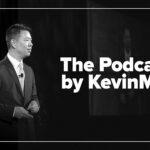When a 26-year-old male with a history of tracheostomy arrived in our emergency department, the case appeared routine—until we uncovered an unusual detail. The patient’s sister had recently changed his tracheostomy tube at home but noticed something concerning afterward: the terminal piece, or the distal end of the tube, was missing. Despite searching, the piece couldn’t be found. This immediately raised concerns that it might be lodged within his trachea, a situation that could have severe implications. Yet, the patient himself had no symptoms, highlighting an intriguing clinical dilemma around asymptomatic foreign bodies in the respiratory system.
Presentation and initial examination
The patient presented to our immediate assessment and non-invasive (IANI) unit, displaying no signs of respiratory distress. He was breathing comfortably, had no complaints of cough, shortness of breath, or discomfort, and his airway appeared clear. During the physical examination, his respiratory function remained stable with normal oxygen saturation levels. While reassuring, the clinical challenge posed by a potentially hidden foreign body demanded further investigation.
Clinical dilemma
The missing terminal piece presented a unique risk. In similar cases, foreign bodies lodged within the trachea can prompt symptoms such as coughing, wheezing, or even respiratory distress. In this case, however, the complete absence of symptoms was unusual, complicating our clinical decision-making. The primary concerns were that the component could cause airway obstruction, infection, or migrate further into the bronchial tree if left unaddressed. Balancing the risks associated with an asymptomatic patient against potential future complications required a prompt yet measured approach.
Investigations and findings
To clarify the situation, we performed a chest X-ray. To our surprise, the imaging revealed the missing terminal piece lodged within the patient’s trachea. Remarkably, despite this discovery, the patient remained completely asymptomatic, stable, and unaware of any issue. This finding brought us to a crossroads in management—while immediate retrieval would prevent future complications, it posed risks in an asymptomatic patient.
Discussion and considerations
This case is an uncommon example of a tracheostomy-related foreign body lodged in the trachea without causing symptoms. Typically, the presence of a foreign body within the airway would prompt respiratory symptoms or discomfort, guiding the clinical team’s response. Here, however, the patient’s respiratory adaptation and the position of the tube fragment allowed for unimpeded airflow. This raises questions about when to intervene in asymptomatic cases, where the immediate risks of invasive retrieval might outweigh the benefits.
Management and outcome
A multidisciplinary team was assembled, including ENT and respiratory specialists, to determine the best course of action. Options considered included careful endoscopic retrieval to prevent future complications. Ultimately, the management plan centered on balancing the low risk of acute obstruction with the potential for long-term issues, concluding that a conservative approach with close monitoring was advisable.
Conclusion
This case illustrates the unpredictable nature of foreign bodies in the respiratory system, particularly in tracheostomy patients. It underscores the importance of a thorough assessment and imaging in cases of missing tracheostomy components, even in the absence of symptoms. For clinicians, it serves as a reminder that asymptomatic patients can still harbor silent but serious threats and that a proactive, cautious approach may sometimes be warranted.
Key takeaways
- Always consider imaging when tracheostomy components are unaccounted for, regardless of symptom presentation.
- A multidisciplinary approach can help balance the need for immediate retrieval versus observation in asymptomatic cases.
- Clinicians should be prepared for atypical presentations, as patients may not always exhibit classic symptoms associated with foreign bodies in the airway.
Mahmoud Hanafy Ali is an emergency medicine senior clinical fellow in the United Kingdom.

















![Catching type 1 diabetes before it becomes life-threatening [PODCAST]](https://kevinmd.com/wp-content/uploads/Design-2-190x100.jpg)


![How political polarization causes real psychological trauma [PODCAST]](https://kevinmd.com/wp-content/uploads/Design-4-190x100.jpg)
![A doctor’s humbling journey through prostate cancer recovery [PODCAST]](https://kevinmd.com/wp-content/uploads/The-Podcast-by-KevinMD-WideScreen-3000-px-4-190x100.jpg)
